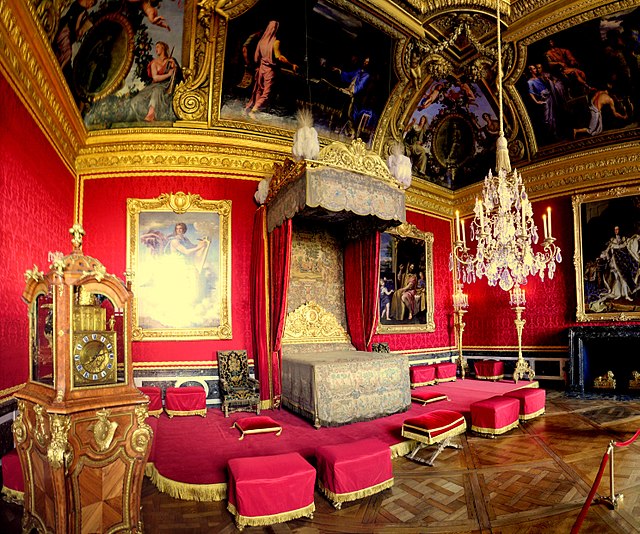History of the Palace of Versailles
The Palace of Versailles is a royal château in Versailles, in the Île-de-France region of France. When the château was built, Versailles was a country village; today, however, it is a suburb of Paris, some 20 kilometres southwest of the French capital. The court of Versailles was the centre of political power in France from 1682, when Louis XIV moved from Paris, until the royal family was forced to return to the capital in October 1789 after the beginning of the French Revolution. Versailles is therefore famous not only as a building, but as well as a symbol of the system of absolute monarchy of the Ancien Régime.
The main construction of Versailles took place in four campaigns between 1664 and 1710
Statue of Louis XIV in Versailles
The château circa 1668, as painted by Pierre Patel (Versailles Museum)
Plan of the main floor (c. 1676), showing Le Vau's enveloppe with the grand appartement du roi in blue and the grand appartement de la reine in yellow. The old château is shown in gray. The terrace overlooked the central parterre of the gardens of Versailles.
The grand appartement du roi is the King's grand apartment of the Palace of Versailles.
Plan of Versailles before the third building campaign, with the King's grand apartment in yellow
Lit de parade, Salon of Mercury. The clock, by Antoine Morand, was offered to Louis XIV in 1706. It is the only piece of furniture from the Grand Appartement that has survived, however the original Boulle marquetry case has been replaced.
Painting of the Persian emperor Cyrus the Great hunting wild boar, by Claude Audran II, located in the Salon de Diane
Salon de Mars








